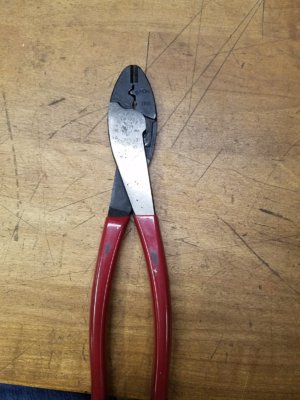Spoolin
Member
negative, ghost rider
I only said the solder part to appease the old school people that will say that's the only way to do it right when dealing with anything wiring or electrical. You can use a couple of red and blue butt connectors and accomplish it easily. I can't remember if I used a yellow cause I know one, maybe two of the wires are a thicker gauge and the blue may not slide on to crimp.
I only said the solder part to appease the old school people that will say that's the only way to do it right when dealing with anything wiring or electrical. You can use a couple of red and blue butt connectors and accomplish it easily. I can't remember if I used a yellow cause I know one, maybe two of the wires are a thicker gauge and the blue may not slide on to crimp.

